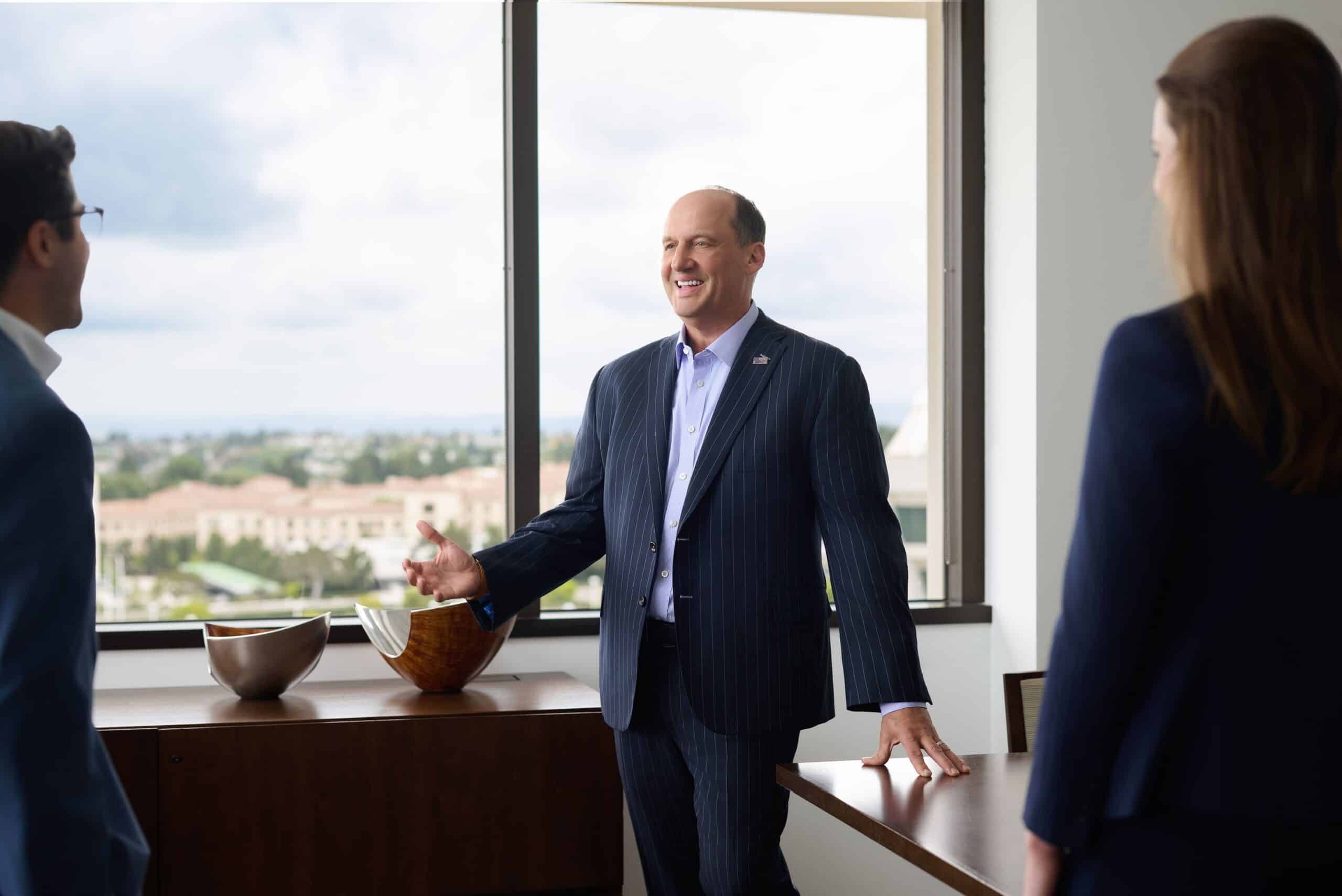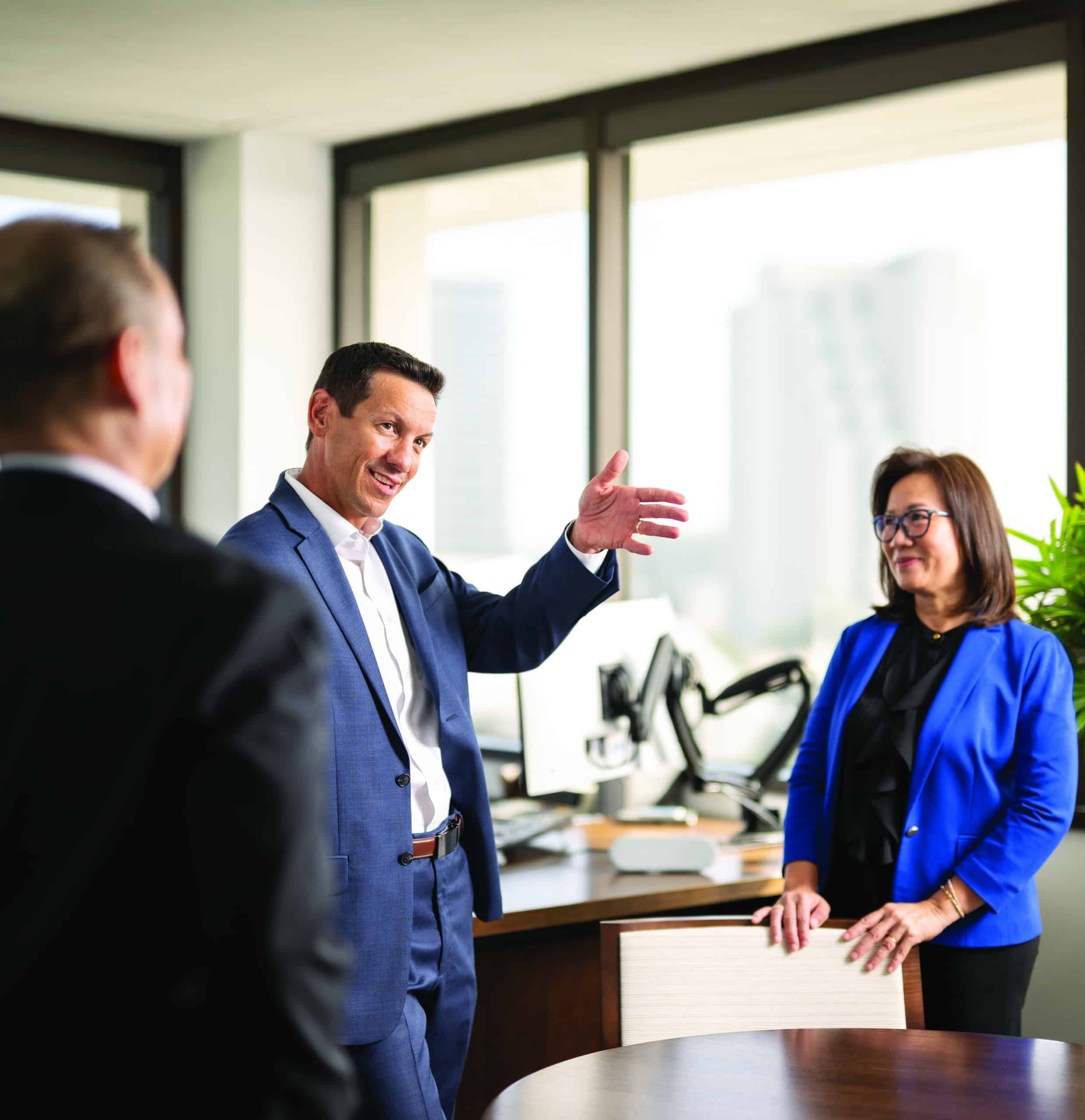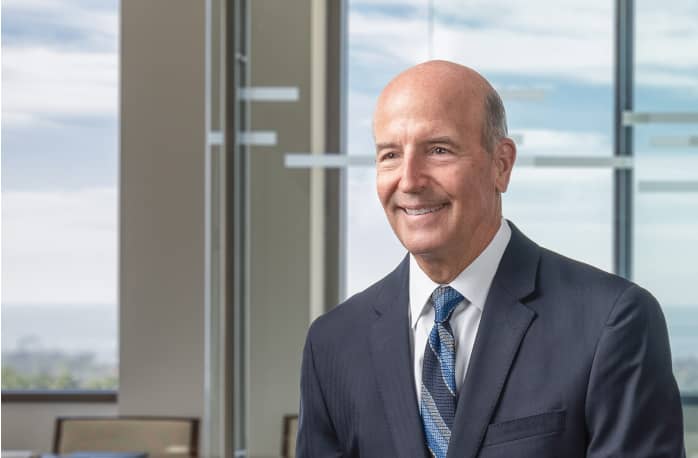Marc DeLuca is known for his extensive business acumen and an endearing people-centric leadership style that sets KBS apart from the rest of the industry. As CEO and president of the firm’s Eastern U.S. region, Marc is a highly respected industry veteran with more than 30 years of expertise in commercial real estate (CRE).
We recently spoke with Marc about his career, his views on CRE investment, and how the Fed’s policy pivot is fueling new momentum in the office market.
Marc, you’ve been in CRE for decades. How would you describe the trends in the office sector over that time, and how do they relate to what is happening in the market today?
I think the real question is, “is office dead?” The simple answer is no. Looking back at historical downturns and past economic cycles, what followed is the predictable fleeing from various commercial asset classes. But time and time again, those classes came back.
Understanding the cyclical nature of the economy — and truly appreciating the emotional lifecycle of commercial real estate — allows us in the industry to put the current situation into historic context and not hit the panic button.
There are solid indicators that the U.S. office market may be bottoming out and will soon enter the next phase of the lifecycle — growth, similar to what was experienced after the dot-com bust and the Global Financial Crisis. The Fed’s recent policy pivot to interest rate cuts, the flight-to-quality trend among office tenants, years of no new office construction and an expanding employer’s market, are all promising signs.
What’s your outlook for the office market, given the current bifurcation among quality types? Is this a trend you see being perpetuated?
The bifurcation between high-quality and second-tier office assets continues to grow as tenants seek the best possible space available, and employers are willing to pay more for office space in well-located and highly amenitized buildings. We expect this trend to continue to benefit the high-quality assets in the KBS portfolio, resulting in lower vacancies and increasing rent growth. Lower-quality, outdated properties will need to upgrade to compete — or they’ll continue to see a decline in their occupancies and valuations.
What’s unique about this particular cycle is that we see a bifurcation not only in office product type, but also within individual metro areas. Some submarkets are on a path to recovery, while some are still hovering at the bottom.
For example, the Century City submarket in Los Angeles is experiencing demand and occupancy growth due to the amenities offered within the submarket and in its westside location. In fact, there’s new office construction happening in Century City, while just a few miles away in downtown Los Angeles, office vacancies continue to rise.
The latest interest rate cuts, mark a significant pivot by the Federal Reserve and is a sign that we’re now at an inflection point. Inflation appears to be moving in the right direction, and we’re seeing increased leasing activity across our portfolio. It’s also encouraging to see large companies like Amazon and Starbucks work to bring their employees back to the office five days a week.
While people may have demonstrated that they can work from anywhere, it’s clear we can do it better together. Innovation is born from in-person collaboration — people working together to solve problems, nurture company culture, and achieve collective success.
Understanding the cyclical nature of the economy...allows us in the industry to put the current situation into historic context...”
Having witnessed this cyclical nature more than once, in what part of the current cycle do you see the industry and economy, and how is KBS navigating the current situation?
Pockets of opportunity currently exist within all sectors of commercial real estate — but this is true for just about any point in the cycle. As a result of the bifurcation in the market and the flight to quality, many investors are avoiding older Class B and C assets and focusing solely on well-located Class A properties.
There hasn’t been a massive shift in target markets over the last few years, but there are some significant concerns in several CBDs that have been slow in returning to the office. Markets like San Francisco, Washington DC, Seattle, Los Angeles, and Portland come to mind.
KBS saw an acceleration of leasing across its Class A office portfolio ahead of the Fed’s recent rate cuts, and this trend continues. We’ve also seen a higher number of larger leases under negotiation — indicating that many firms are positioning themselves to increase the number of workers they expect back in the office.
Several years of higher interest rates and a challenging construction loan market have stalled if not outright prevented most new construction. If inflation stays in check, rates should continue to decrease over the coming year. And as tenants continue to lease higher quality office space, we may even start to see sufficient demand for new Class A office development in some of the more supply constrained markets in the next few years. In the meantime, the lack of new supply is further supporting the office market’s recovery.
KBS also owns multifamily properties. How does this sector compare to office in terms of investment strategy?
Every commercial real estate asset class has been impacted by similar macroeconomic forces, including high interest rates, inflation, and strict lender underwriting. That said, investor strategies vary quite a bit between the office and residential arenas.
In the multifamily sector, investors are placing capital in all asset types ranging from affordable to workforce housing to luxury apartment communities. In office, we’re seeing a renewed sense of optimism from both investors and lenders, but it’s concentrated in best-in-class assets located in growing markets throughout the country. These assets simply tend to perform better — in both good and challenging economic times.
The lending environment hasn’t changed in the last few months. There’s been an influx of private capital that’s trying to cover the gap that’s been created as many of the large commercial banks are still deleveraging their office portfolios. This will likely limit their participation in the near-term rebound. However, with a more diverse set of market participants and ample capital, banks should start to see some loan payoffs that could allow for at least some potential new office loan origination. And investors in office should have access to increased liquidity to take advantage of the positive trends now developing in the market.
What are your thoughts on office-to-multifamily conversions? Do you see other types of uses entering the market?
A lot of discussion has focused on the conversion of office into condominiums or apartments. That process, however, is easier envisioned than done. Only 3 to 5% of buildings have conversion potential.
One of the reasons that the Class A office sector is so resilient, is that it can adapt to changing tenant needs in the market. The way companies are using office space is evolving.
Technology is also driving square footage as companies incorporate more computer-generated AI into their businesses. This requires larger servers and space to house them, which is likely to impact office occupancy in a positive way going forward.
Let’s talk a little about asset management. What are some of the challenges facing asset managers, and how are you guiding KBS’ team to exceed expectations in this environment?
Our active asset management strategies are focused on leasing. Along with maximizing and optimizing asset performance, strong asset management is very much about relationships. This is what closes deals and creates loyalty. I encourage our senior executives to bring our younger analysts and associates with them to broker and tenant events so they can also begin to form those relationships.
KBS co-directors of asset management, Brett Merz and Allen Aldridge, are doing an excellent job of leading our asset management team despite liquidity challenges. They know how vital it is to elevate the tenant experience with the right amenities, all while we striving to maximize returns for all our stakeholders.

What piece of advice has someone given you that really affected your leadership journey, and what piece of advice have you shared with others?
One of my most respected mentors has been Raymond Ritchey, who’s senior executive vice
president at Boston Properties. Raymond is the consummate gentleman, and the best advice I received from him over the years wasn’t necessarily his words but his actions. Raymond’s philosophy was that we’re all human, so taking the time to develop trusted relationships and form lasting bonds is what leads to success.
As for advice I give to others, I believe that two of the most important words in the English language is “thank you.” I’ve made it a point to remind my own daughters to use them — earnestly and often.
I believe that two of the most important words in the English language is ‘thank you.’ ”
Taking a moment to express your appreciation is a simple but powerful gesture that demonstrates your respect for people, says a lot about you, and makes a real difference in business and in life.
To learn more, visit Marc DeLuca’s profile page on KBS.


